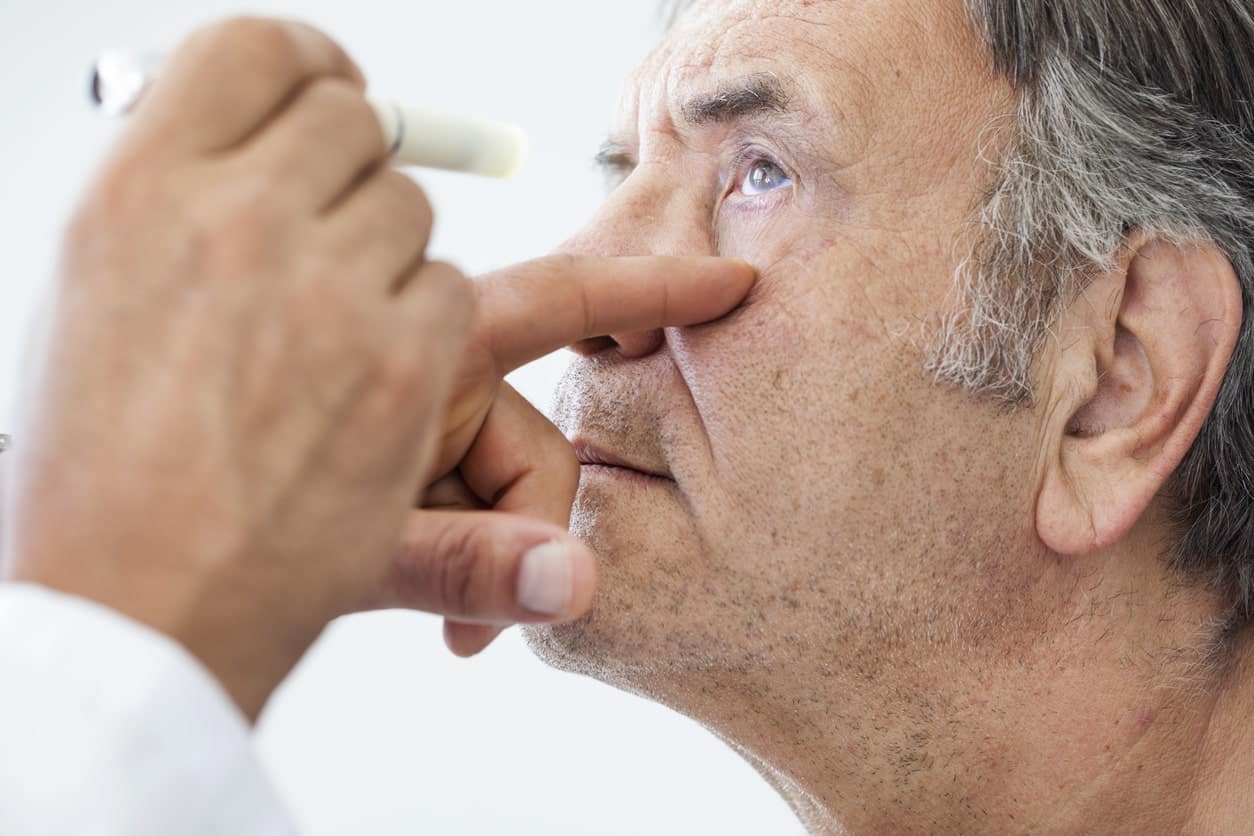What Is Dry Eye Syndrome?

Chronic Dry Eye, also known as Dry Eye Syndrome, is a medical condition that results from the eyes’ reduced ability to produce tears of the normal quantity or quality. Recent studies show that this condition affects more than 3.2 million Americans. Tears are surprisingly complex in nature, being formed by several different types of glands on the outer surface of the eye, the inner surface of the eyelids, and special glands deep within the skin of the eyelids. And so, a problem with any of several of these components can lead to inadequate tear formation.
Dry Eye Symptoms
Dry eye symptoms are most common in people ages 50 and older, however, they can result from medical injuries or certain medications. They can also occur in women who experience the change in hormones from pregnancy. The most common causes of dry eye include the following:
- Blood-pressure medications
- Antihistamines
- Eye injury
- Diabetes
- Thyroid disease
What Causes Dry Eye?

In Virginia, especially during our humid summers, it could seem difficult to develop dry eye, but the causes are actually mostly internal. As we age, we naturally create fewer tears. This is especially true of women due to hormonal changes. While both men and women get dry eye, is it more common in women who have been through menopause.
Dry eyes can develop when the tear ducts are not producing a sufficient number of tears. Or the condition can be due to a chemical imbalance in the tears themselves. Natural tears require a particular chemical balance to lubricate the eyes efficiently. Sometimes, your eyes are actually overproducing tears due to the irritation in your eyes, but the tears aren’t the right consistency to help.
Chronic Eye Dysfunctions
Dry eyes can be chronic or tied to circumstances, such as allergy season. Chronic dry eye is usually the result of dysfunction in the tear-producing areas of the eyes, often with the Meibomian glands. If clogged glands are behind your chronic dry eye, changes in conditions, such as the end of allergy season, will not help.
Beyond aging and hormones, there are a variety of causes of dry eye:
- Clogged Meibomian glands
- Entropion (eyelids turn in) or ectropion (eyelids turn outward)
- Blepharitis
- Certain diseases, such as rheumatoid arthritis and thyroid disease
- Long periods looking at a computer screen or reading, without blinking frequently enough
- Long use of contact lenses
- Being in smoke, wind, or very dry climates
- Having refractive eye surgery, such as LASIK or PRK
- The side effect of certain medications, such as diuretics, allergy/cold medicines, sleeping pills, anti-anxiety and anti-depressives, heartburn medicines, and beta-blockers
What Treatments Are Available for Dry Eye?
Dry eye can have different causes in different patients, so there are a variety of treatment options that we may use at Shenandoah LASIK & Cataract Center. A doctor first rules out causes such as reactions to certain medications the patient may be taking, inherent eyelid problems such as entropion or ectropion, or even a side issue of other diseases.
Eye Drops
The first treatment options usually involve medications for dry eye. These may be eyedrops to control corneal inflammation or to reduce eyelid inflammation. Eye inserts made from hydroxypropyl cellulose may be inserted. These slowly dissolve and release lubricating substances. Certain drugs called cholinergic increase tear production.
Surgical Treatment Options
The first treatment options usually involve medications for dry eye. These may be eyedrops to control corneal inflammation or to reduce eyelid inflammation. Eye inserts made from hydroxypropyl cellulose may be inserted. These slowly dissolve and release lubricating substances. Certain drugs called cholinergic increase tear production.
Surgical Plugs
A normal healthy tear film will wash the surface of the eye and flush dirt, bacteria and other debris into small “drains” (called lacrimal puncta) located on the inner corner of our eyelids. So one way to prevent excess loss of tears is to occlude or “plug” those puncta. Punctal plugs are tiny, biocompatible devices inserted into tear ducts to block drainage.
Artificial Tear Replacement At Shenandoah Lasik & Cataracts Center
Frequently, artificial tear supplement drops are a first treatment regimen. There are many different brands and forms of ocular lubricating drops available, each with their own components that target some or all of the three layers of a normal tear film. They can be used to relieve burning and irritation for a limited period of time. Artificial tear ointments can be useful for longer periods, especially overnight. Recent studies have determined that there is frequently an inflammatory component to dry eye. And sometimes a mild steroidal eye drop is useful.
Tear Stimulant Drops
Prescription medications in drop form (RestasisTM and XiidraTM) are now available which act to stimulate increased production of tears by the eye itself.
Nutritional Supplements We Offer In Winchester, Virginia
Ophthalmologists will suggest taking natural supplements such as fish oil, flax seed oil and vitamin E — a combination can be found in TheraTears Nutrition capsules with Omega3.
Lipoflow® Thermal Pulsation System

Doctors are moving from simply rescuing dry eye patients to prevention. 86% of dry eye patients suffer from Meibomian Gland Disease (MGD). Much of the movement to include prevention is being driven by the ability to image the glands enabling the doctor and the patient to see gland damage much earlier than was previously possible.
Lipiflow helps with this dysfunction to get your glands producing tears again. Sadly, gland loss is permanent. Therefore, it is important to identify non-functioning glands and treat them (by removing the obstruction) as soon as possible.
LipoFlow Frequently Asked Questions
Schedule A Dry Eye Treatment Consultation
If you have Dry Eye-related symptoms and are interesting in learning more about treatment options, please call us today at 540-722-6200 to schedule a consultation. Shenandoah LASIK & Cataract Center is proud to serve Washington, D.C., and the surrounding areas.


